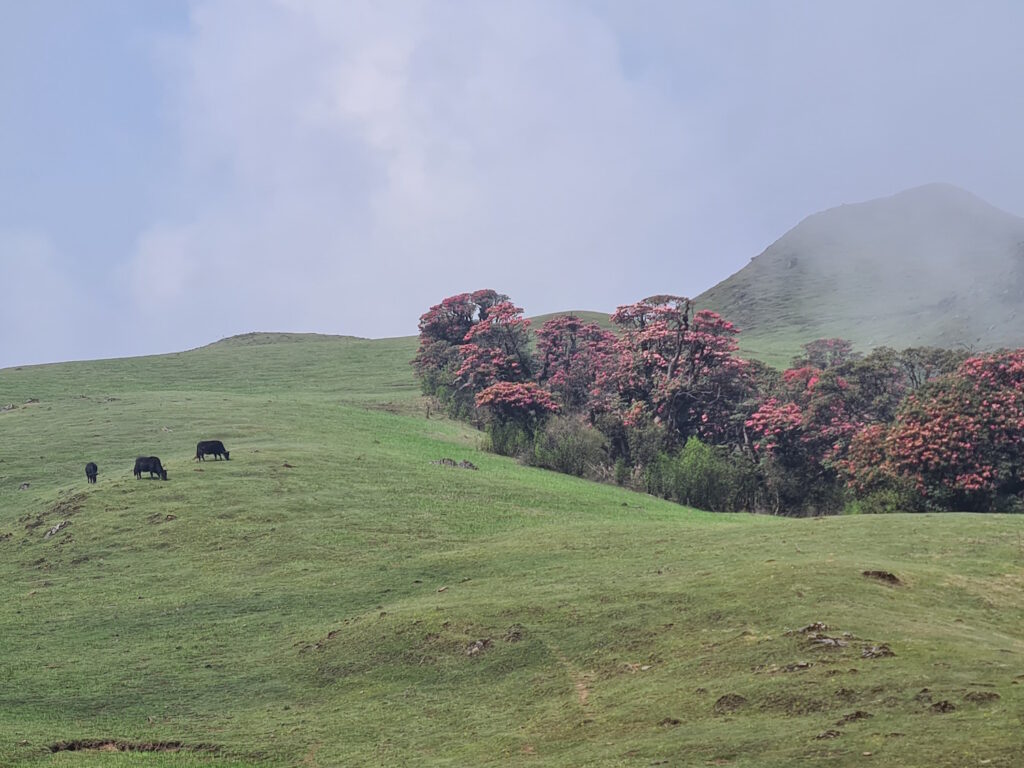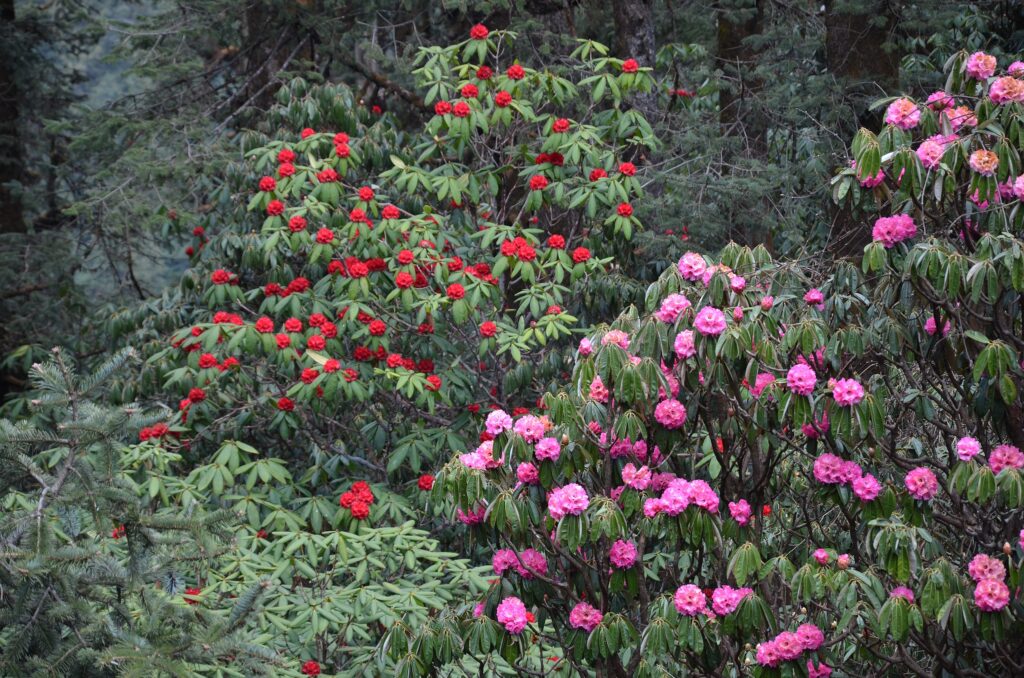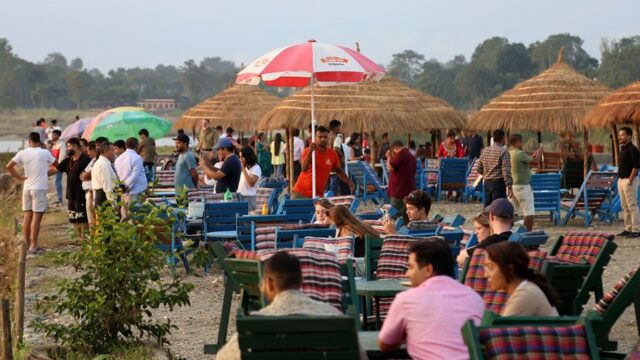The newly developed Dagbung (Gurans) Trail in Ramprasad Rai Rural Municipality-1, Okhre, has rapidly become a favored destination for both domestic and international tourists. Carved through breathtaking natural landscapes adorned with blooming rhododendrons and panoramic vistas, the trail is drawing visitors eager to experience the pristine charm of eastern Nepal.
Dagbung (Gurans) Trail
Named ‘Dagbung’ meaning ‘Gurans’ in the indigenous Kirat language the trail offers sweeping views of majestic Himalayan peaks such as Mt. Everest, Makalu, and Kanchenjunga. Alongside the Himalayan panorama, the trail also reveals stunning views of the southern plains, making it a visually rich trekking route.
Local resident Jagdish Rai shared that tourists are not only drawn to the scenic beauty but also to the opportunity to taste authentic local cuisines. “People come here to enjoy local delicacies while immersing themselves in natural beauty. The trail has boosted our local trade and opened new markets for our products,” he said, adding that the volume of both domestic and international tourists has significantly increased since the trail’s opening.

According to Ward Chairperson Jogendra Rai of Ramprasad Rai-1, the trail was constructed with the dual aim of conserving Nepal’s national flower, the rhododendron, and promoting sustainable tourism. “We aim to make this one of the municipality’s primary tourism hubs. The area is naturally beautiful, and we’re committed to developing it responsibly,” he stated. He further confirmed that around NPR 7 million has already been spent on the trail construction.
The Dagbung Trail is being developed under the Nepal Climate Change Support Program, a model initiative focused on eco-tourism and environmental conservation. The ongoing construction has already covered approximately seven kilometers from Okhre Bazaar, with plans to extend it to Chulachuli, a nearby religious and tourist site in Ward No. 4.
Ramprasad Rai Rural Municipality Chairperson Thambahadur Rai shared that the trail will be a part of a larger internal tourism circuit. He said, “We are building this trail as a foundation to connect various tourism spots and create a network that supports long-term economic sustainability for our region.”

In line with this goal, a homestay program is being planned to provide accommodations and cultural experiences to travelers. Additionally, tea cultivation is being expanded across 100 ropanis of land to cater to tourists and boost local agricultural income. “Our rural municipality is rich in historical, religious, and cultural landmarks. Through tourism development, we aim to transform these into lasting economic assets,” Chairperson Rai added.
Looking ahead, the municipality also plans to link the Dagbung Trail with the broader Mundhum Trail, an ambitious trekking route that traces the sacred and cultural paths of the Kirat community. This connection is expected to further increase tourist arrivals and global exposure.
With the Dagbung Trail already capturing attention, efforts are now focused on enhancing infrastructure, conserving biodiversity, and promoting the area as an international trekking and cultural destination. The local government’s vision combines environmental sustainability, economic empowerment, and cultural preservation to ensure that tourism growth benefits the entire community.






